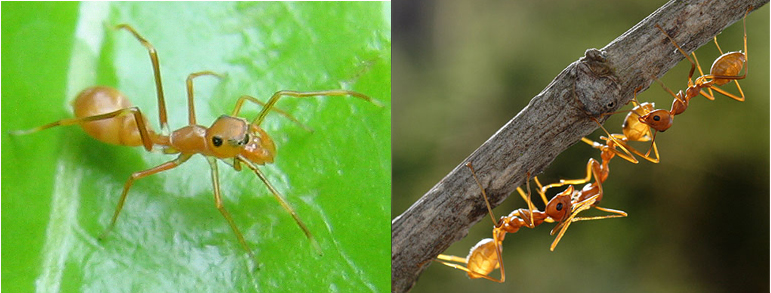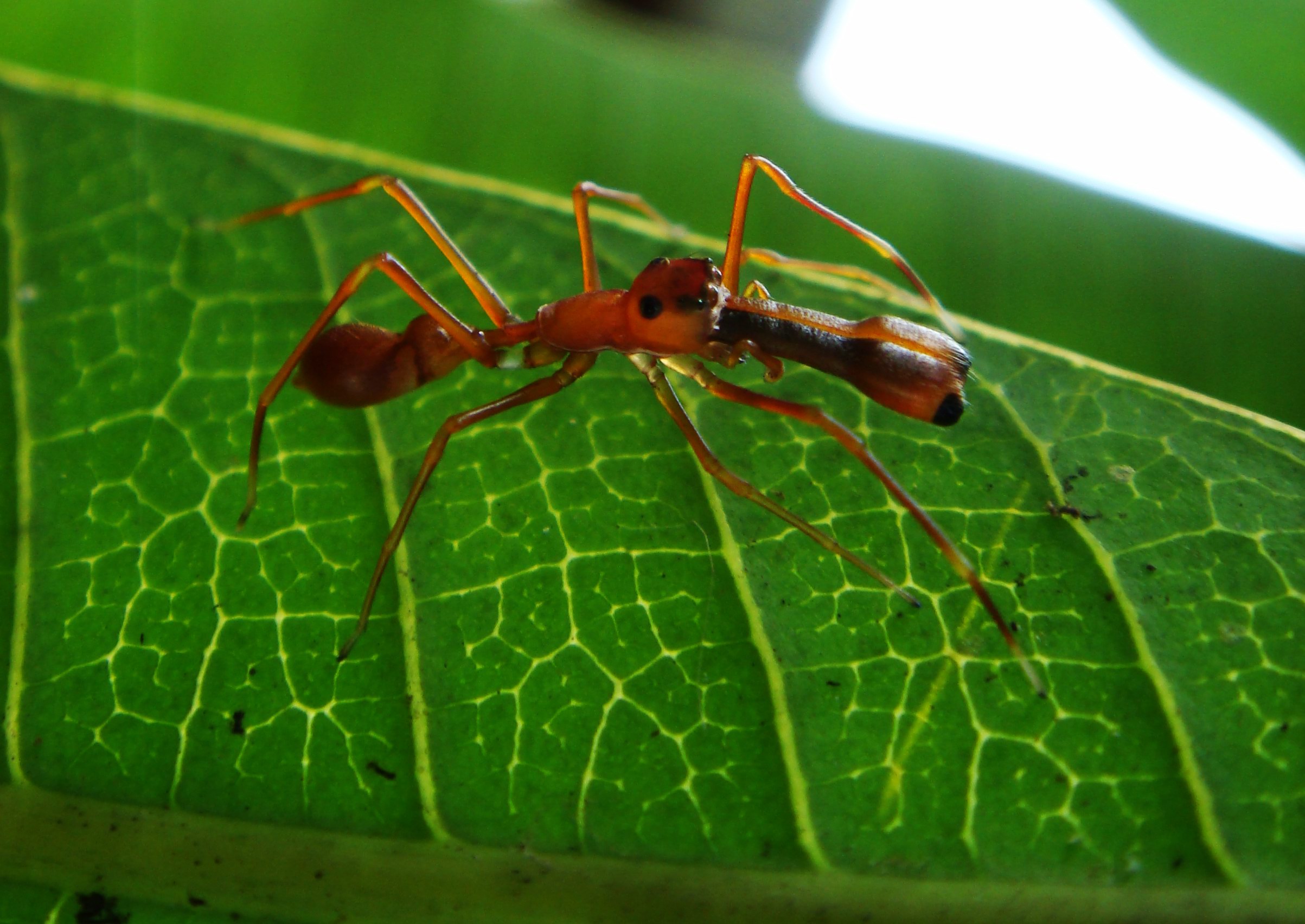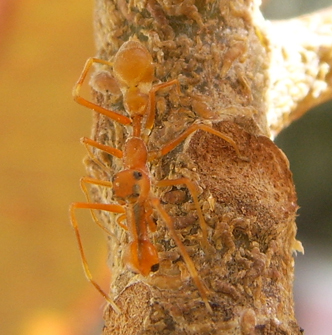Scoundrels – #8
Ants are pretty mean animals. They bite, some of them sting and individuals from the same nest can co-ordinate their activities to repel and even kill much larger animals. For these reasons, most animals leave them well alone making them excellent subjects for mimicry.
There are lots of invertebrates that pretend to be ants, but perhaps the most impressive are the jumping spiders, some of which behave and look like ants to such an extent that it’s often difficult to tell them apart when all you catch is a quick glimpse. Below is a particularly impressive female ant-mimicking jumping spider alongside the weaver ant it pretends to be:

Often, these spiders have the cheek to pretend their front legs are antennae, waving them about in the air like they are actually doing something. It has the distinctive thin ‘waist’ of an ant. It scurries around like an ant and to top off its disguise, it has a pair of dark eye-spots well behind its big, forward-looking eyes. It’s an incredible little animal that blends in with the ants for protection from predators, some of whom are the ants themselves.
The male ant-mimicking spider’s disguise is not quite as effective thanks to its massive mouth-parts (chelicerae). Here is the male of the species shown above and just take a look at it’s ridiculous chelicerae:

The grossly exaggerated feeding gear is used to despatch prey, but their primary use is in courtship, hence their enormously inflated dimensions. The males joust with their chelicerae to win the right to mate and because bigger is better when it comes to male adornments they run the risk of blowing their cover. Amazingly, these spiders have evolved a way of incorporating their incredible adornments into their disguise. Worker weaver ants often carry their smaller nest mates (minor workers) around and this is what the male jumping spider is mimicking – an ant giving another ant a lift. The photo below shows this more clearly:

So, despite their grossly exaggerated chelicerae, even the male ant-mimicking spiders are superbly disguised and therefore protected making them number 8 in the scoundrel chart.
Leave a Reply